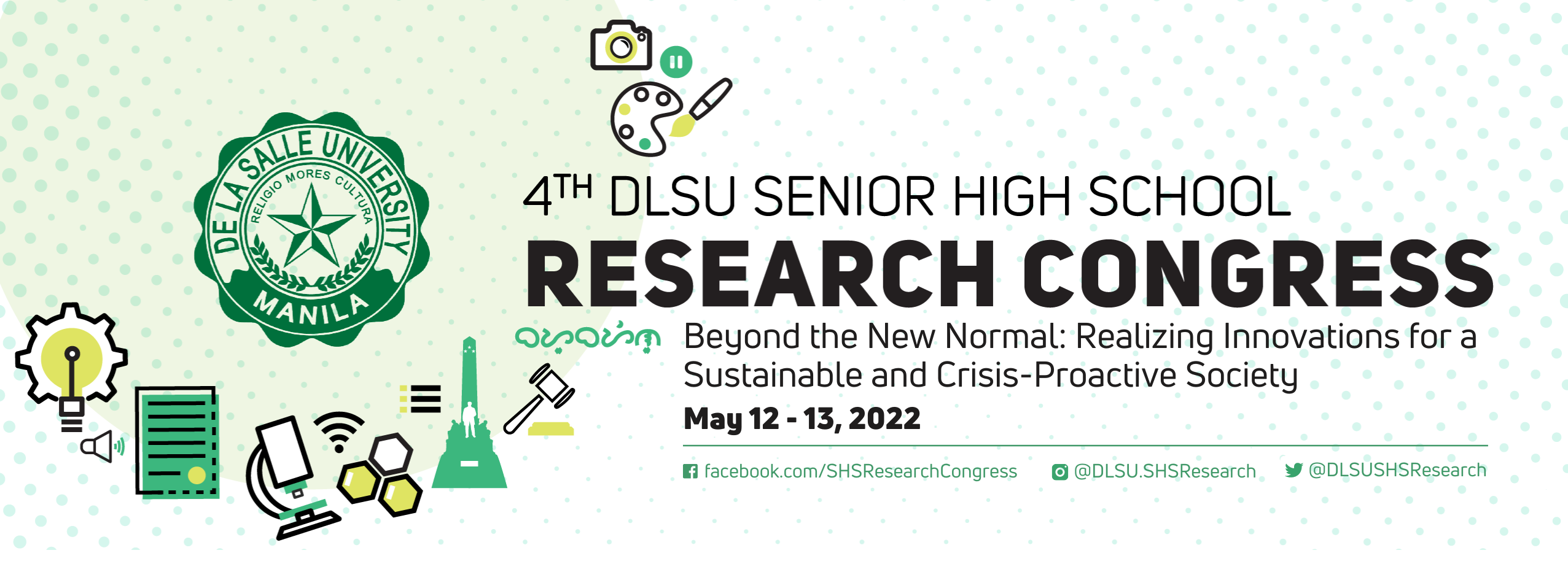Document Types
Poster Presentation
Research Advisor (Last Name, First Name, Middle Initial)
Estefanie U. Bertumen
Start Date
12-5-2022 1:00 PM
End Date
12-5-2022 3:00 PM
Abstract/Executive Summary
The issue of SARS-CoV-2 virus (COVID-19) infections has reached a global pandemic scale, forcing the majority of social interactions to move to the online platform. Online tool access has heavily increased, migrating basic human interactivity to online channels to disseminate information and to keep a connection with others while maintaining a physical distance. With this, various educational institutions around the world, including the Philippine academic community, have made it a priority to maximize online efforts so that education may still continue despite the constraints. For many learning communities, this has been an abrupt change from in-person classroom activities to heavy reliance on virtual learning resources. This study seeks to investigate the benefits and drawbacks associated with online tools as an assistive tool for online learning in the Philippine academic community. Varying factors that impact the effectiveness of online tools toward students’ learning were also determined. A survey was administered to 30 Senior High School STEM students at De La Salle University-Manila to gather their perspectives on online tools in order to provide both qualitative and quantitative analysis of data. The survey result shows that the majority of the respondents frequently use video tutorials as a supplement to online learning than the other tools. This is followed by chatrooms to interact with classmates, resolve academic questions, and collaborate in group projects. Most of the participants use online tools passively, yet depending on the feature and need, they can incorporate both active and passive usage, yielding a more flexible learning style employed.
Keywords
online tools; education; online learning; online tool preferences; asynchronous class
Research Theme (for Paper Presentation and Poster Presentation submissions only)
21st Century Learning and Innovations (CLI)
Included in
Effectiveness of Common Online Educational Tools as Assistants in Online Learning Among DLSU-SHS Students
The issue of SARS-CoV-2 virus (COVID-19) infections has reached a global pandemic scale, forcing the majority of social interactions to move to the online platform. Online tool access has heavily increased, migrating basic human interactivity to online channels to disseminate information and to keep a connection with others while maintaining a physical distance. With this, various educational institutions around the world, including the Philippine academic community, have made it a priority to maximize online efforts so that education may still continue despite the constraints. For many learning communities, this has been an abrupt change from in-person classroom activities to heavy reliance on virtual learning resources. This study seeks to investigate the benefits and drawbacks associated with online tools as an assistive tool for online learning in the Philippine academic community. Varying factors that impact the effectiveness of online tools toward students’ learning were also determined. A survey was administered to 30 Senior High School STEM students at De La Salle University-Manila to gather their perspectives on online tools in order to provide both qualitative and quantitative analysis of data. The survey result shows that the majority of the respondents frequently use video tutorials as a supplement to online learning than the other tools. This is followed by chatrooms to interact with classmates, resolve academic questions, and collaborate in group projects. Most of the participants use online tools passively, yet depending on the feature and need, they can incorporate both active and passive usage, yielding a more flexible learning style employed.


